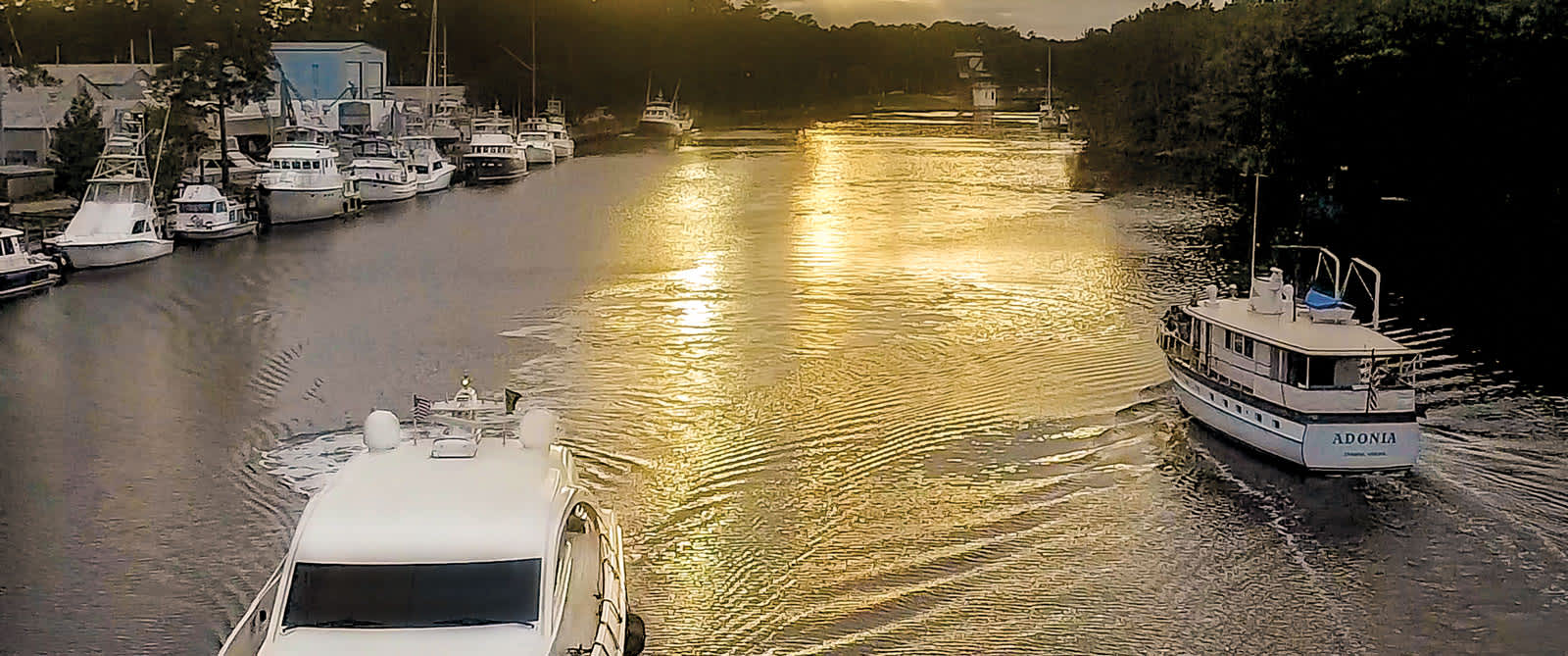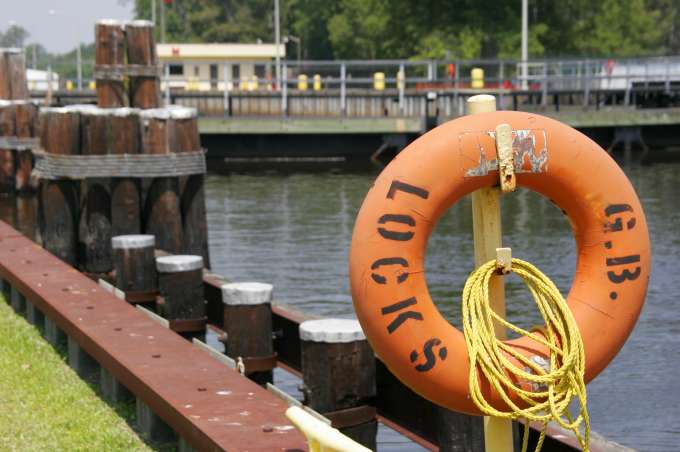
Chesapeake’s Great Bridge Lock Park is the perfect place to spend an afternoon. You can picnic, play, fish and crab; but the name can be a little confusing. It might even sound like Chesapeake had a Scottish section until you see signs that read L-O-C-K as opposed to L-O-C-H. Still, it makes you think: What exactly is a lock? There has to be more to the name of this beautiful waterside park, so here at Chesapeake Uncovered, we decided to do a little digging.
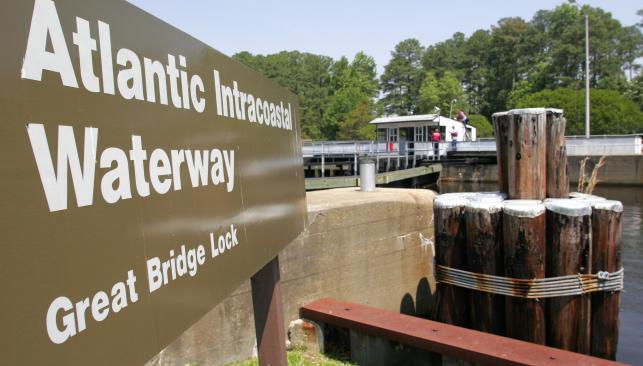
Locks are used to raise and lower water levels to help vessels easily travel between bodies of water. The Great Bridge Lock can hold up to 20 boats at a time while operators open and close four sets of gates and valves. What makes the Great Bridge Lock particularly unique is that it’s a guard lock, meaning it protects water quality.
To understand how we got here, and what makes the Great Bridge Lock so cool, let’s go back to the 19th century when the steam engine changed EVERYTHING. Wind and row-powered boats gave way to huge, steam-powered vessels that could carry more goods, to more places, at a much faster rate. In Chesapeake, that meant boats needed a deeper and wider passage than the hand-dug Great Dismal Swamp Canal.
In 1850, steam-powered dredges called "Iron Titans," tore through tangles of roots and cypress knees to build the Albemarle and Chesapeake Canal. The Great Bridge Lock was in place to regulate travel – and business boomed. In 1912, the locks were put under the control of the Army Corps of Engineers as part of a project to connect the entire East Coast with one aquatic superhighway. In 1915, the Locks were left open as a part of this project. A few years later, in 1919, the Albemarle and Chesapeake Canal became a part of the new Atlantic Intracoastal Waterway.
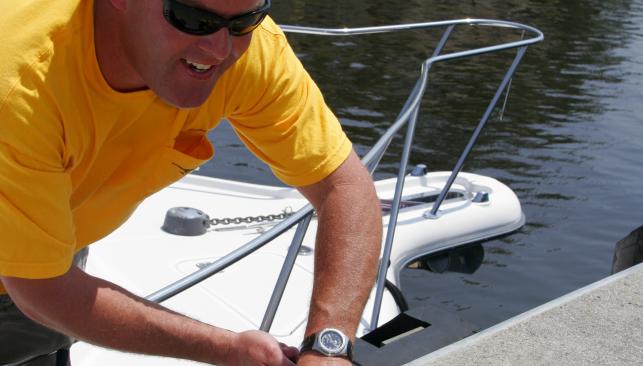
Talk about a traffic boom. This waterway, still in use today, allowed vessels to travel from Florida to Maine without the dangers of the open ocean. It was a huge step for commercial and pleasure boats alike. However, certain things started to change. With high traffic keeping the lock open, the ecosystem suffered. Animals and plants that typically thrived were adversely affected.
Here’s why.
On one side of the lock, freshwater flows from the Currituck Sound in North Carolina. On the other side, salty water flows from the Elizabeth River fed by the Chesapeake Bay. Most plants and animals are suited for either fresh or saltwater. Not both. The mix caused harm to the ecosystem.
Everyone knows that part of what makes Chesapeake so special is its natural habitats, so action needed to be taken. A special guard lock to both protect the environment and allow for transportation was the solution. It was completed in 1932 and is still in use.
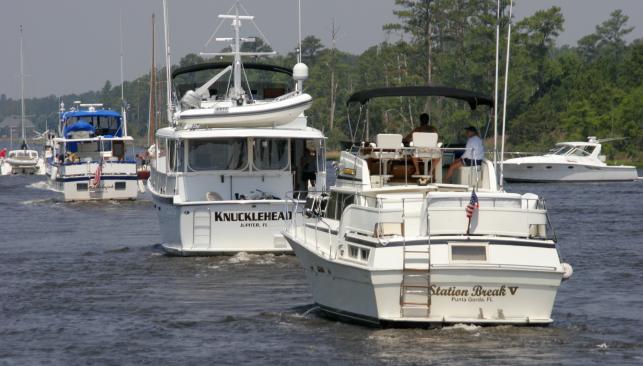
I like to keep this in mind when I go to the Great Bridge Lock Park today. It’s not just a great spot to hang out, it’s a modern marvel built to preserve the nature that Chesapeake holds so dear. It’s a part of everyday life that shows exactly what the community is about.
So, whether you want to cast a line, have a picnic, or just relax and read on a beautiful day, The Great Bridge Lock Park is the perfect place to enjoy nature and let the moments begin.

